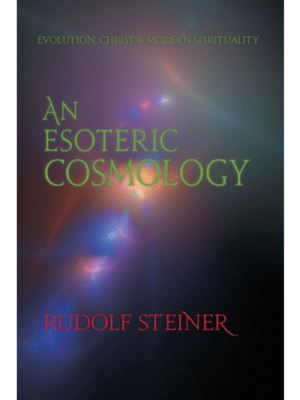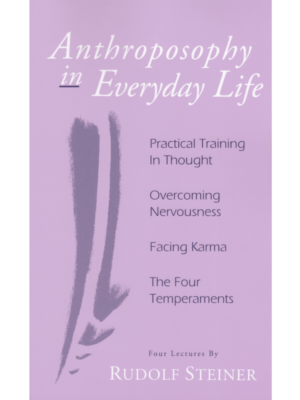Description
How to Know Higher Worlds is the classic account of the modern Western esoteric path of initiation made public by Steiner in 1904. He begins with the premise that “the capacities by which we can gain insights into the higher worlds lie dormant within each one of us.” Steiner carefully and precisely leads the reader from the cultivation of the fundamental soul attitudes of reverence and inner tranquility to the development of inner life through the stages of preparation, illumination, and initiation.
Steiner provides practical exercises of inner and outer observation and moral development. By patiently and persistently following his guidelines, new “organs” of soul and spirit begin to form, which reveal the contours of the higher worlds thus far concealed from us. Steiner in this important work becomes a teacher, a counselor, and a friend whose advice is practical, clear, and effective. The challenges we face in life require increasingly deeper levels of understanding, and Steiner’s text helps readers to cultivate the capacities for such insights and places them at the service of humanity.
This is Steiner’s most essential guide and has been translated into many languages inspiring hundreds of thousands of readers around the world. How to Know Higher Worlds has been admired by some of the most brilliant minds of our time.
CONTENTS:
- How to Know Higher Worlds
- The Stages of Initiation
- Initiation
- Practical Considerations
- Requirements for Esoteric Training
- Some Effects of Initiation
- Changes in the Dream Life of the Esoteric Student
- Achieving Continuity of Consciousness
- The Splitting of the Personality in Esoteric Training
- The Guardian of the Threshold
- Life and Death: The Great Guardian of the Threshold
This volume is a translation from German of the written work Wie erlangt man Erkenntnisse der höheren Welten? (GA 10).
Product Details:
ISBN: 9780880103725
Paperback, 259 pages.
Publisher: Anthroposophic Press, Published: January 1994
Size: 5.3 x 0.7 x 8 inches. Weight: 0.80 Lbs.
Author
Rudolf Steiner
(1861 – 1925)

Rudolf, born in Kraljevec,, Croatia, lived in Weimar and Berlin, where he became a well-published scientific, and philosophical scholar. Known for his work with Goethe’s scientific writings, his spiritual teaching career began under the auspices of the Theosophical Society. Steiner came to use the term Anthroposophy (and spiritual science) for his philosophy, spiritual research. The influence of Steiner’s multifaceted genius led to innovative and holistic approaches in medicine and various therapies. Rudolf Steiner lectured throughout Europe on philosophy, religious renewal, Waldorf education, and biodynamic agriculture. He also introduced Goethean science, architecture, and the arts of drama, and eurythmy. In 1924, Rudolf Steiner founded the General Anthroposophical Society, which today has branches throughout the world. He died in Dornach, Switzerland.
Author & Commentator
Arthur Zajonc, Ph.D.

Arthur is the Andrew Mellon professor of physics and interdisciplinary studies at Amherst College, And is currently the director of the Academic Program of the Center for Contemplative Mind, an organization of 1500 academics supporting the appropriate inclusion of contemplative practice in higher education. Dr. Zajonc is the former General Secretary of the Anthroposophical Society in America. He is also cofounder of the Kira Institute, past President of the Lindisfarne Association, and a senior program director at the Fetzer Institute. He has served as scientific coordinator and editor for several dialogues with the Dalai Lama: Dr. Zajonc is the author of Catching the Light (1993, 1995), co-author of The Quantum Challenge (2nd ed. 2005), and coeditor of Goethe’s Way of Science (1998).
Translator
Christopher Bamford
(1943 – 2022)

Born in Cardiff, South Wales studied as an undergraduate at Trinity University in Dublin and earned his master’s degree at the Annenberg School for Communication, University of Pennsylvania. Christopher was Editor in Chief at SteinerBooks (Anthroposophic Press) and its imprints. A Fellow of the Lindisfarne Association, he lectured, taught, and wrote widely on Western spiritual and esoteric traditions. His books include a selection of his numerous introductions, Encountering Rudolf Steiner: Introductions to Essential Works (2022); Healing Madonnas. He also translated and edited numerous books, including Homage to Pythagoras: Rediscovering Sacred Science (2001); and Celtic Christianity. Mr. Bamford work is included in The Best Spiritual Writing 2000 (“In the Presence of Death”) and The Best American Spiritual Writing 2005 (“The Gift of the Call”). Christopher passed over the threshold on May 13, 2022, at his Mt. Washington, Massachusetts home.
Editorial Reviews:
“A true classic of spiritual literature. It is one of the best ways I know for opening up one’s life to the spiritual realms in a manner that is balanced, integrated, and loving. This is the product of a great soul who pointed out new routes into the interior.” —David Spangler, author of Blessing: The Art and the Practice
“It is not only a personal guide to the spirit, but also a path through self-knowledge to compassionate action in the world.”–Arthur Zajonc, author of Catching the Light: The Entwined History of Light and Mind

Your purchase on this site helps Theosophy Foundation, Inc., sustain and promote worldwide the first principle; “We are all One.” If interested in Theosophy and what it’s all about, please visit our parent website: www.blavatsky.net.
Thank you.












Reviews
There are no reviews yet.